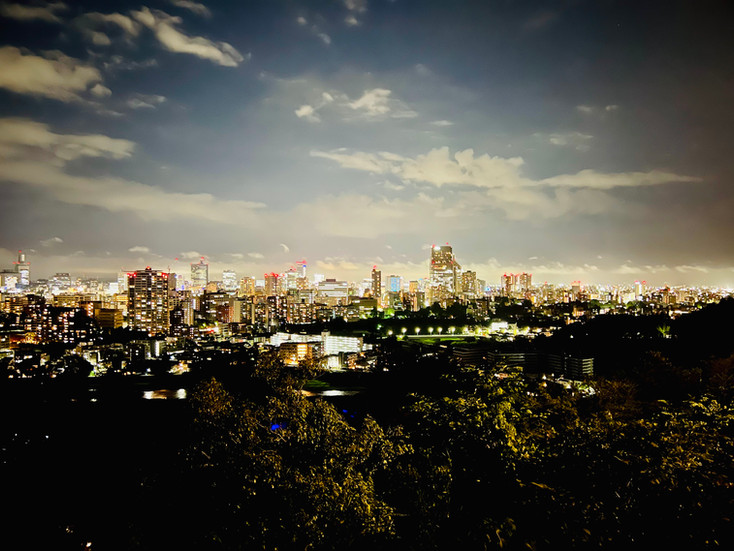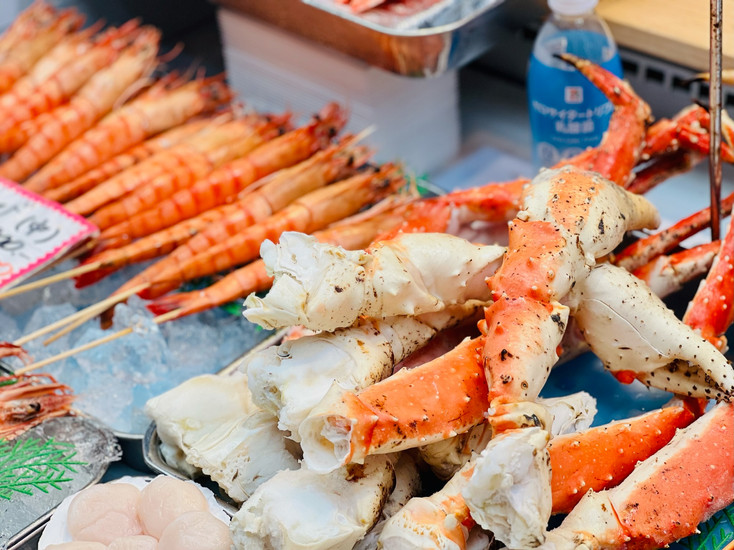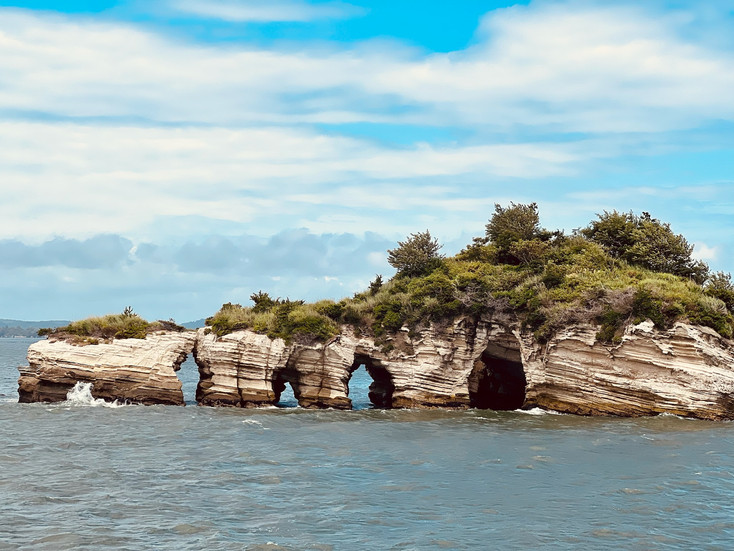Japan: The Hottest Place to Visit This Summer
- akhilapamula
- Sep 2, 2024
- 6 min read
Japan is a bundle of contradictions.
It is incredibly modern yet traditional. Harajuku girls and hypersexualized anime characters are in direct opposition to their outwardly conservative and ascetic values. There is rapid urbanization in the midst of a deep reverence for nature. It is truly an enigma—and one of our favorite places in the world.
Tokyo embodies all those values. Between Neal and I, we have been to Tokyo six times, and it continues to open itself up like an onion. With over 14 million people, it is one of the most populous cities in the world and behind only New York City in terms of economic production.
Click here for see how we got there.
Too Hot to Handle
This last time we visited Tokyo, I was 22 weeks pregnant. People thought we were crazy to go—not only because it was August (read: hot and humid), but because of my perceived inability to eat sushi. I’ll get to that in a bit. While it was incredibly hot, we got very good at exploring the merchandise at convenience stores to cool down. Luckily, the city is incredibly interconnected, with one of the most impressive metro systems in the world; multiple companies operate hundreds of stops over 15 different lines.
My normal “let’s just walk everywhere” attitude couldn’t withstand the heat in a city as massive as Tokyo, so it was just convenient to hop on the train to get us to the neighborhoods we wanted to explore. The train system makes it easy to stay virtually anywhere in the city. While the neighborhoods of Ginza, Shibuya, and Shinjuku are amongst the most popular for tourists, you have essentially unlimited access to any neighborhood between the tourist-only 72-hour metro pass (available only in person) and the JR pass. (Note: The price of the JR pass increased by over 70 percent in October 2023, so you should figure out if it’s even worth the price if you’re not traveling to multiple different cities.)
Our Tokyo Respite
Many of the luxury hotels in Tokyo are located in the Marunouchi and Akasaka districts. We stayed at the Prince Gallery Tokyo in Akasaka. It may not be the sexiest neighborhood, but Akasaka offers a break from the nonstop Tokyo action—plus you’re only a sub-5 minute walk from the Asakusa-Mitsuke and Nagatacho metro stations.
The hotel takes up the 30th to 36th floors of a mixed-use tower, with the reception located on the top floor. When the lift opens, you are greeted by multi-story, floor to ceiling windows that frame Tokyo Tower. The entrance and lobby ooze modernity, with chrome-heavy designs and a gray-ish black motif with pops of neon. We stayed in the Deluxe King Room which offered incredible views of the Tokyo skyline that were even more impressive at night. The automated blackout curtains made adjusting to jet lag much easier because it was virtually impossible to tell what time of day it was when they were closed. The modernity from the lobby extended into the tech setup, which included a bedside control panel and an ipad that controlled the lights, temperature, shades, and room service options. As I’d come to expect from Japanese hospitality, a fresh set of pajamas, slippers, and chocolate were laid out on our comfortable king bed every night after turndown service.

One of the coolest features of the room was the exhibitionist bathroom. When you first walk into the room, you notice the bathroom is enclosed in glass and allows you a full view of the entire space. With a push of a button, the glass instantly frosts and becomes opaque. Neal’s favorite feature was the toilet. Japan has mastered the art of making your tush feel well-cared for. The TOTO toilets detect your presence, raise the seat cover, and strategically light up before warming the seat. The built-in bidet also washes you when you finish. This was key, as the half bath did feel a little cramped—even by Japanese standards. While Japan is known for tiny hotel rooms, at over 400 square feet, the room was a spacious respite from the sweltering heat. It was so nice that I didn’t mind having to come back to freshen up multiple times a day.
The Best Time to Travel to Japan
The most popular times to travel to Japan are between March and May and September and November, when the more temperate weather coincides with the ferocious cherry blossom bloom and vivid fall colors. The country is buzzing and vibrant then, but be prepared to simultaneously share your experience with millions of tourists. July and August are less popular times to visit due to the heat, but in my opinion, that period is a truly underrated time to visit.
The hot, steamy days are embraced with traditional spectacles, music, and food, and the balmy evenings are celebrated with literal explosions that light up the night sky. These celebrations coincide with Oban, an ancient tradition that marks the spiritual return of ancestors to their earthly homes. The most famous festival, Gion Matsuri, takes place in Kyoto throughout the month of July. The month-long festival, which is celebrated with parades and street parties, culminates in a two-day procession that has been recognized in UNESCO’s Intangible Cultural Heritage List. The Aomori Nebuta festival, which takes place in the northern Japanese city of Aomori, takes place in early August. Giant paper mache floats that depict mythical creatures in Japanese legend called Nebuta swim alongside traditional Haneto dancers throughout the city streets.
We chose to visit the city of Sendai to experience the country’s largest Tanabata Festival. Also known as “Star Festivals,” the celebration originates from the Chinese Qixi Festival that commemorates the meeting of the Orihime and Hikoboshi deities, which are represented by the Vega and Altair stars. According to legend, these star-crossed lovers were separated by the Milky Way and only allowed to meet once a year on the seventh day of the seventh lunar month of the lunisolar calendar. Locals hang thousands of streamers throughout the city, transforming shopping arcades into forests of multicolored bamboo and washi paper installations. We also saw tanzaku, which are small multicolored pieces of paper with handwritten wishes on them; they hang from trees and bamboo throughout the city, leaving the writers to hope and wait for their wishes to come true. Once we waded our way through these elaborate displays, we enjoyed the local cuisine and traditional performances taking place in various areas. The lanterns and light display at Sendai Castle were particularly impressive, glowing vividly in the night as a juxtaposition to the modern skyline.
Yes, You Can Eat Sushi While Pregnant
Now, I’m going to preface what I’m about to write with the following: everyone’s pregnancy journey is unique and special to them, and the decisions they make during that time are just as personal and varied. When we decided to go to Japan, the first thing people asked me was, “How are you going to refrain from eating sushi?” To which my immediate answer was, “I’m not.” This may come as a surprise that a physician would not necessarily follow CDC and the American College of Gynecology (ACOG) recommendations. Refraining from sushi is advised because those who are pregnant should want to avoid listeria, toxoplasmosis, heavy metals, and food poisoning, as it can cause even more risk to a pregnant person and their baby than it would to a nonpregnant individual. However, I want to avoid all those things even when I’m not pregnant.
By choosing hygienic places to eat and monitoring outbreaks, the risk of such exposure is on the lower end. That being said, it is still a risk, and everyone’s threshold is different. Japan is extremely hygiene-conscious—especially around food and water— so I personally felt very comfortable eating whatever I wanted. (Note: I did avoid fish that were high in mercury, and lucky for me, I don’t have a taste for swordfish and king mackerel.)
The world famous Tsukiji Outer Market in Tokyo needs no introduction, as it’s one of the largest fish markets in Japan. In 2018, the fish auction location was moved a few miles away to a multi-story space in Toyosu where you can sample amazing sushi in a series of omakase-style restaurants. And if you’re an early riser, you can watch the world-famous tuna auctions from a viewing platform. The vendor space at the original Tsukiji Outer Market is as busy as ever, with dozens of street food-style stalls serving up some of the freshest seafood in a no-frills environment. While tuna may be king in Tokyo, the oysters are the star of the show in Matsushima Bay, which is a quick 40 minute train ride from Sendai. Considered one of the three most scenic views of Japan by Confucious-era scholars, the bay comprises hundreds of small, pine-dotted islands that have been written about by Japanese poets for hundreds of years. I can only hope that future generations will continue to find poetry in not only its beauty, but also in its seafood.




































































Comments